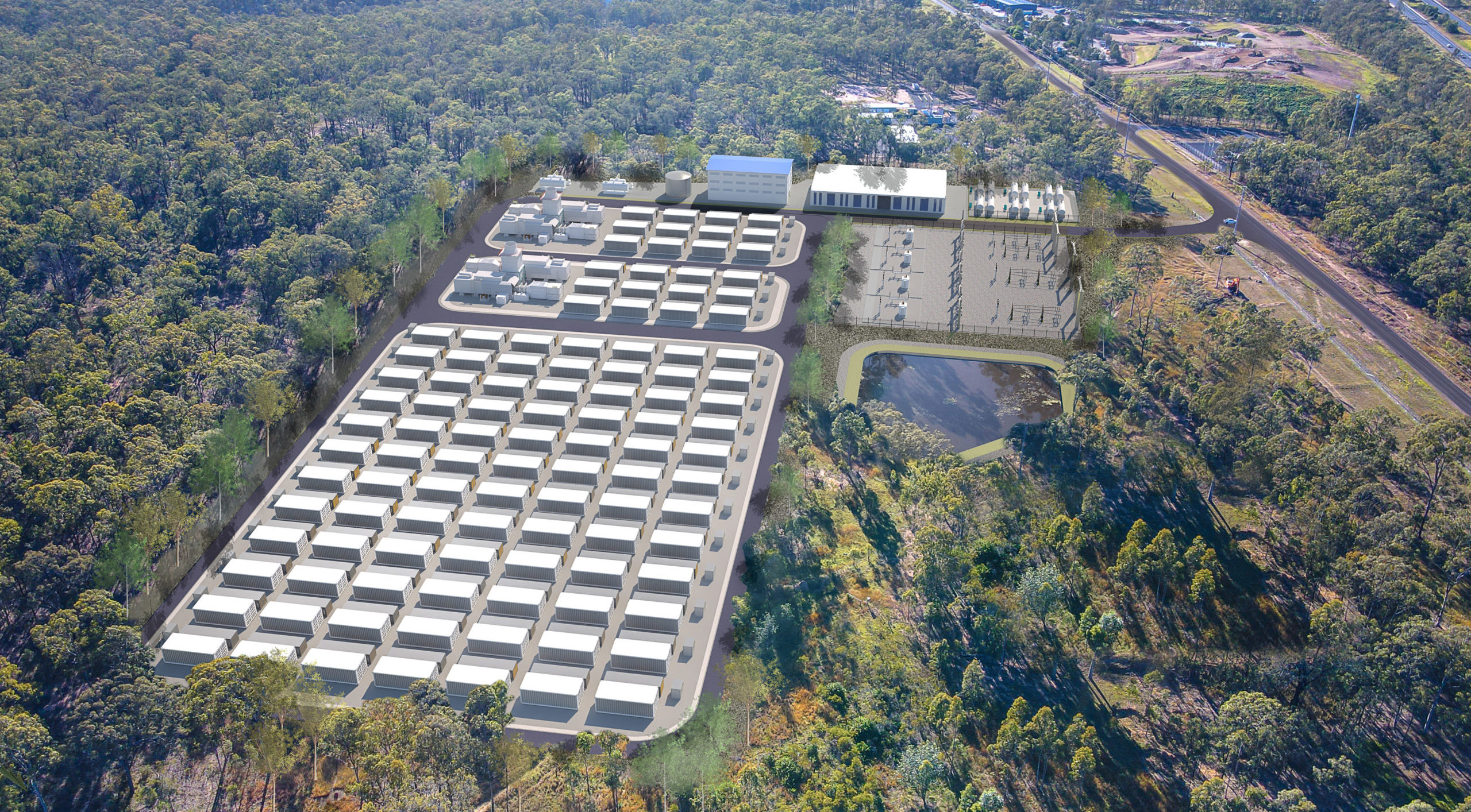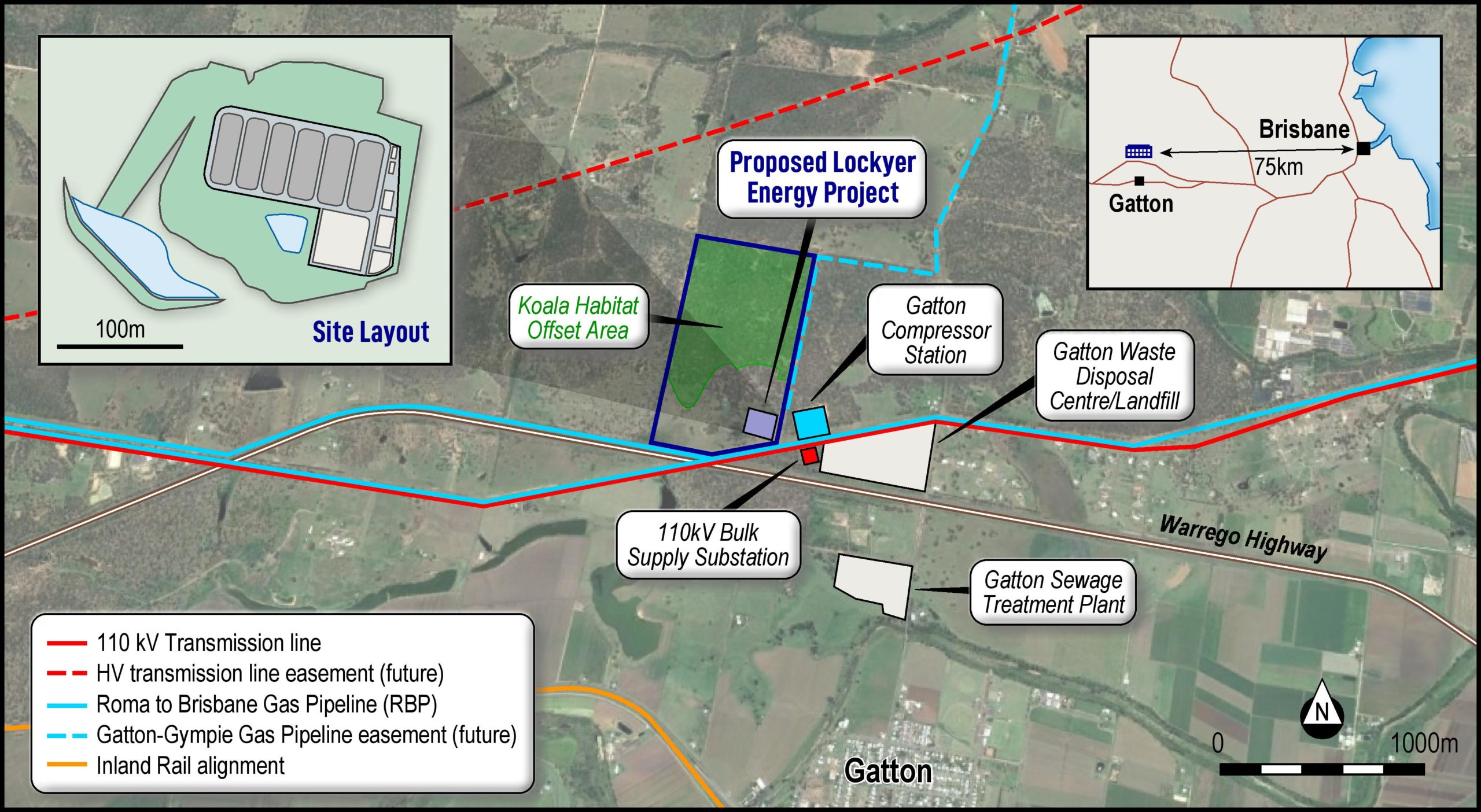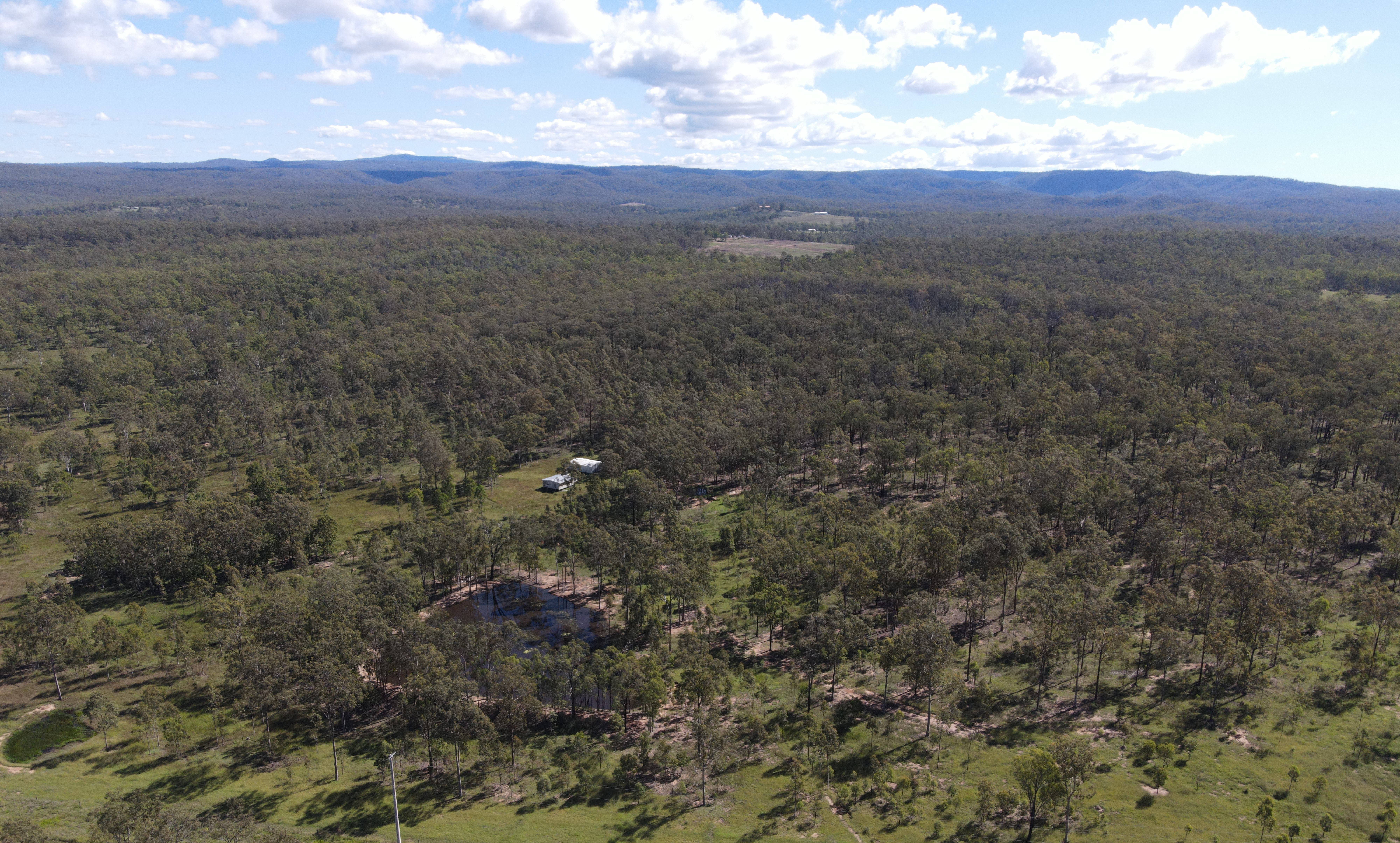
Background
The Project will use a combination of batteries and hydrogen-ready, high efficiency aero-derivative gas turbines. Energy can be harvested from the grid during periods of high generation from solar and wind farms and stored in the batteries. This energy will then be used during periods of peak demand or when power from wind and solar is not available. The hydrogen-ready gas turbines can also be used to provide longer duration power supply during peak periods.
The combination of increased renewable energy and “firming” power allows the grid to transition away from coal fired generation whilst putting downward pressure on power prices and reducing the risk of blackout for homes and businesses alike.

The Site
The Lockyer Energy Project is located north of Gatton in Queensland’s Lockyer Valley, adjacent to key existing infrastructure facilities, including gas and electricity transmission systems feeding the larger Brisbane metropolitan and outer urban regions. The Lockyer Energy Project has existing Development Approval and Environmental Authority.

ESG
The Project is managed under the Quinbrook Infrastructure Partners ‘Responsible Investment & Environmental, Social and Governance Policy’ which sets the principles for the group’s investments to work towards positive environmental outcomes.
Because battery storage is now a globally proven renewable firming technology, the Lockyer Energy Project utilises the latest battery storage technology in a 900MW hybrid plant configuration. The layout reduces the potential environmental impacts of the project whilst putting downward pressure on power prices and reducing the risk of blackout for homes and businesses alike.

Offsets & Conservation
The Project has already secured 41.65 hectares of koala habitat that has been set aside as an offset area. This area is secured as a covenant on the Land Title and cannot be used for any purpose that is inconsistent with the conservation outcomes set out in the Project’s ‘Offset Management Plan’.
The areas of the site not required for long term operations will be rehabilitated, revegetated and landscaped as set out in the ‘Landscape and Revegetation Plan’ to enhance habitat on the site and minimise the visual impact of the project.
Construction activities will be undertaken in a manner that minimises environmental harm and will be governed by the Project’s ‘Construction Environmental Management Plan’. Clearing activities will be strictly managed and supervised by qualified fauna spotters.
